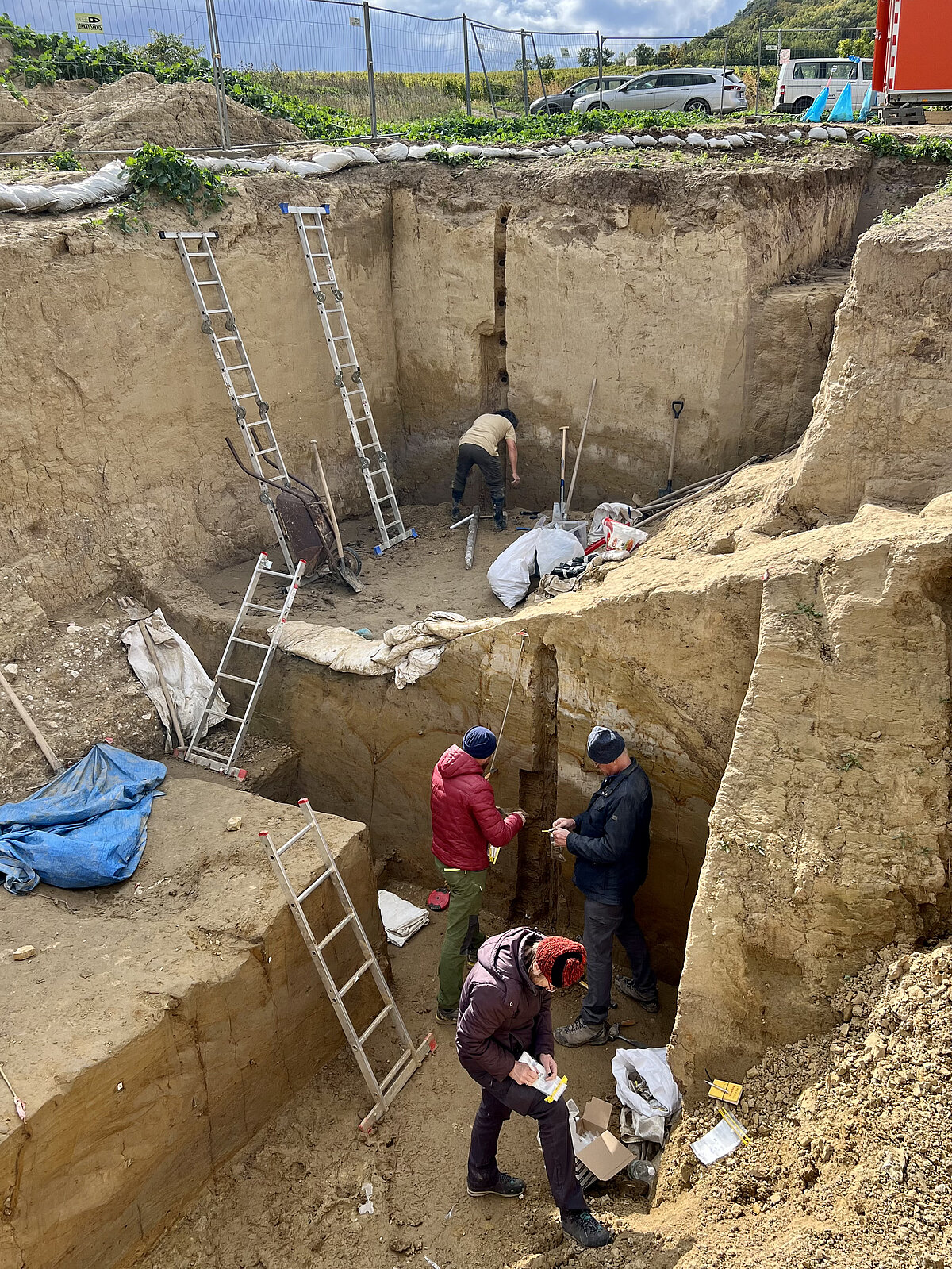MAMBA - Exploring Mammoth Bone Accumulations in Central Europe
The main goal of the Horizon ERC-2021-COG project “Exploring Mammoth Bone Accumulations in Central Europe (MAMBA)” is the investigation of mammoth bone concentrations deposited in conjunction with Upper Palaeolithic artefacts at the fringes of the Western Carpathians between 35,000 and 25,000 years ago.
Since the 19th century, the discovery of large accumulations of the remains of woolly mammoths in association with Upper Palaeolithic artefacts fascinated researchers and the general public alike. Despite many years of scientific research and dispute, our knowledge about these sites and the relationship between mammoths and the contemporaneous Upper Palaeolithic hunter-gatherers remains incomplete. Our investigations in this project focus on the mammoth bone accumulations discovered in the forelands of the Western Carpathians and seek to understand how they formed and which function they had for the hunter-gatherer groups in the timeframe from 35,000 to 25,000 years ago – a period of major techno-cultural and environmental changes in approaching the Last Glacial Maximum.
Project Goals
In this project we study zooarchaeological and archaeological materials covering the full chronological range of this archaeological phenomenon. Hereby, we consider both existing collections, as well as conduct new fieldwork at the key sites of Dolní Věstonice I (Czech Republic), Kraków Spadzista (Poland) and Langmannersdorf (Austria). Site-specific signals of human-mammoth interaction within their local palaeoenvironmental context are used to investigate chrono-spatial changes in both mammoth populations and hunter-gatherer societies. In addition to traditional archaeological and bioarchaeological approaches, we utilise recent methodological and technological advances in ancient DNA research, stable isotope studies, radiometric dating, geoarchaeological analyses, palaeoenvironmental reconstruction, and palaeodemographic modelling.
The resulting dataset will allow an integrated investigation of the formation of mammoth bone accumulations which we expect to reveal the interactions between human and mammoth populations in Central Europe in the context of palaeoenvironmental changes. Beside its impact for Upper Palaeolithic research in Central Europe, we expect, on a more general scale, to also contribute to an improved understanding of human behaviour, cultural developments, and human adaptation to dynamically changing climatic and environmental conditions.
Research at the Austrian Archaeological Institute
The work tasks conducted by the Austrian Archaeological Institute within the project include reassessment of the materials from existing collections of Langmannersdorf in Austria, including a selection of suitable mammoth remains for sampling, as well as performing field investigations at the site. Furthermore, the Austrian Archaeological Institute is responsible for geoarchaeological sampling and coordination of the geoarchaeological investigations at all three sites.
Publications
Publications
- M. Moskal-del-Hoyo, G. Juźwińska, J. Wilczyński, M. Novák, S. Boriová, M. Händel. Fuel wood procurement at the Pavlovian site of Dolní Vĕstonice I (Czech Republic). Anthraco 2023 Abstract Book, 102. https://anthraco2023.weebly.com/uploads/1/3/2/5/132572102/anthraco2023_abstract_book.pdf
Principal investigator
Team
Project partners
- Jarosław Wilczyński (Principal Investigator), Institute of Systematics and Evolution of Animals, Polish Academy of Sciences, Krakow, Poland
- Love Dalén, Centre for Palaeogenetics, Naturhistoriska riksmuseet, Stockholm, Sweden
- Dorothée Drucker, Senckenberg Research Institute, Tübingen, Germany
- Martin Novák, Institute of Archaeology, Czech Academy of Sciences, Paleolithic and Paleoethnology Research Center Dolní Věstonice, Czech Republic
- Alexander Pryor, Archaeology Department, University of Exeter, United Kingdom
Cooperations
- Dominik Brill, Institute of Geography, University of Cologne, Germany
- Helen Fewlass, Francis Crick Institute, London, United Kingdom
- Ursula Göhlich, Geology, Natural History Museum Vienna, Austria
- Gary Haynes, Anthropology, University of Nevada, Reno, United States
- Frank Lehmkuhl, Physical Geography and Geoecology, RWTH Aachen University, Germany
- Andreas Maier, Faculty of Arts and Humanities, Forschungsstelle Altsteinzeit (FAST), University of Cologne, Germany
- Christoph Mayr, Department of Geography and Geosciences, Friedrich-Alexander-University, Erlangen, Germany
- Magdalena Moskal-del Hoyo, Institute of Botany, Polish Academy of Sciences, Krakow, Poland
- Kerstin Pasda, Institut für Ur- und Frühgeschichte, Friedrich-Alexander-University, Erlangen, Germany
- Caroline Posch, Prehistory, Natural History Museum Vienna, Austria
- Daniel Vereș, Institute of Speleology, Romanian Academy, Cluj-Napoca, Romania
- Bernd Zolitschka, Institute of Geography, University of Bremen, Germany
Duration
2022-2027
Funding
Horizon ERC Grant ERC-2021-COG Project number 101045245 “Exploring Mammoth Bone Accumulations In Central Europe (MAMBA)”, PI Jarosław Wilczyński




